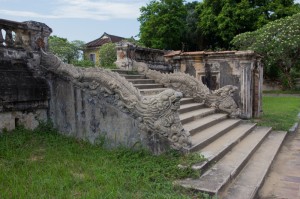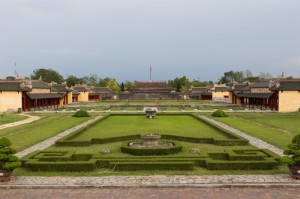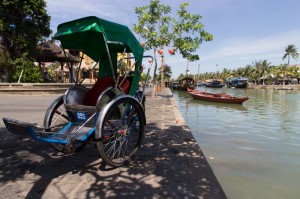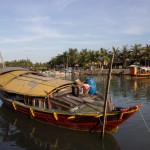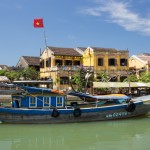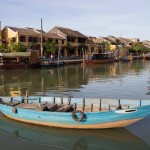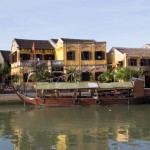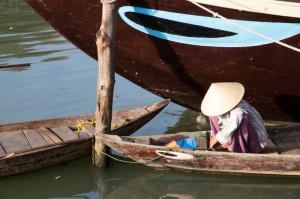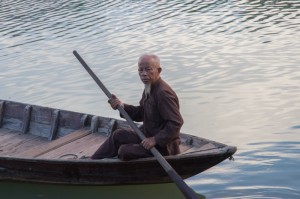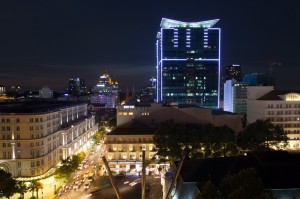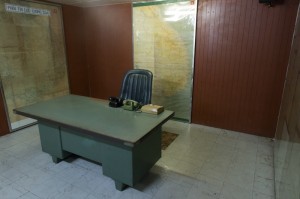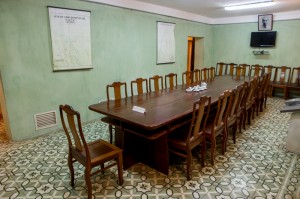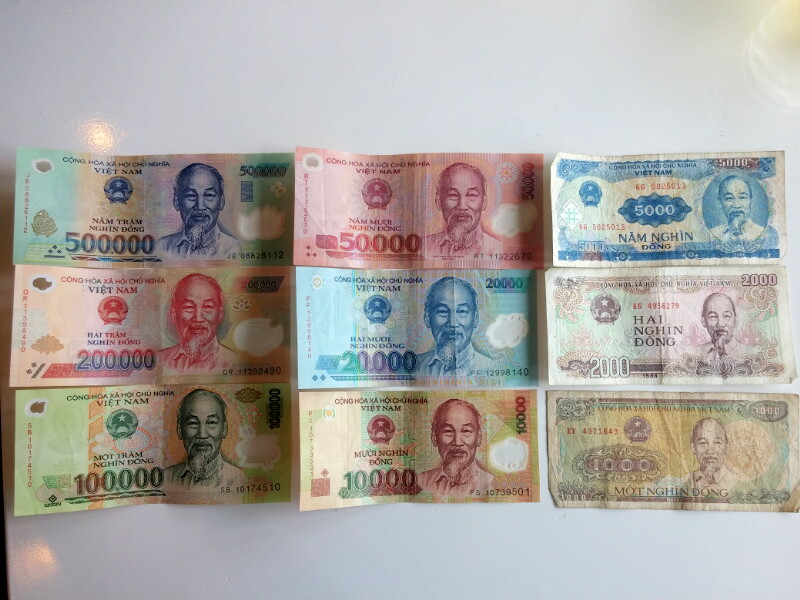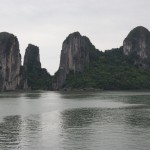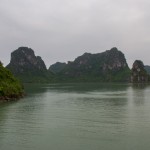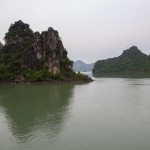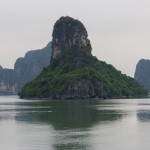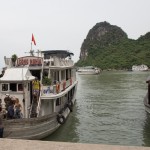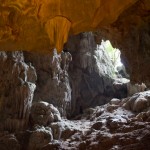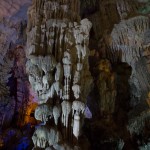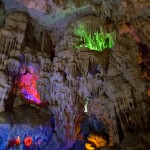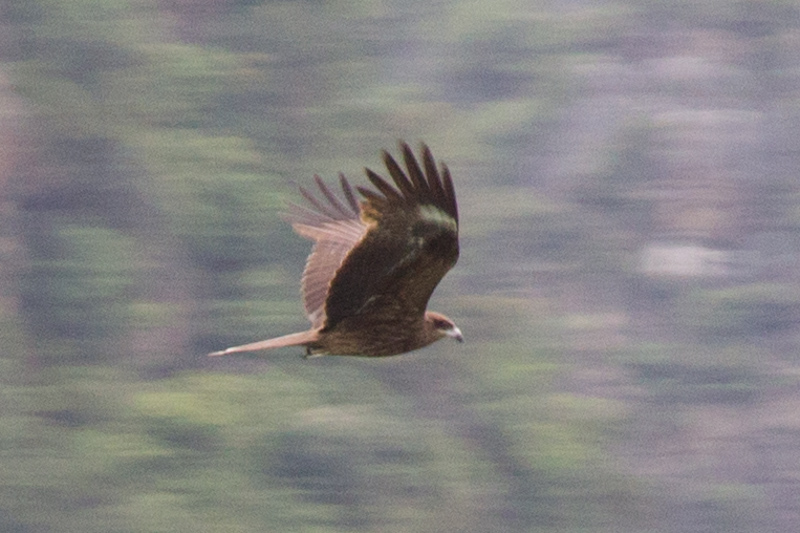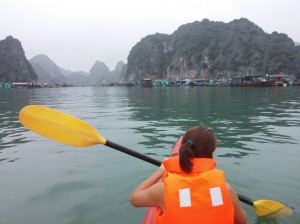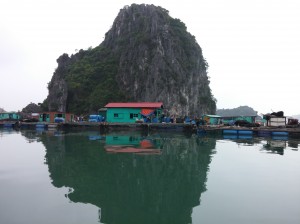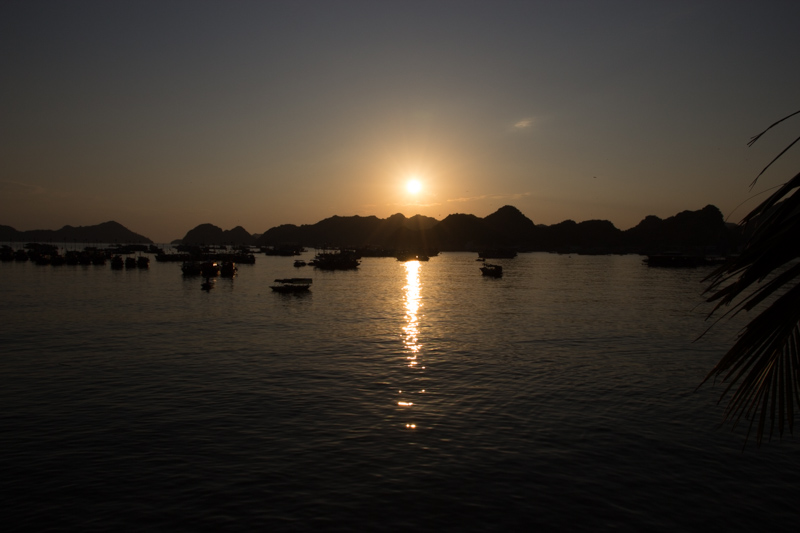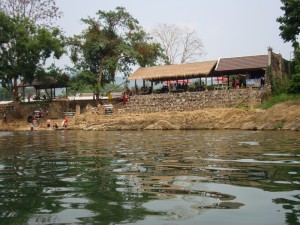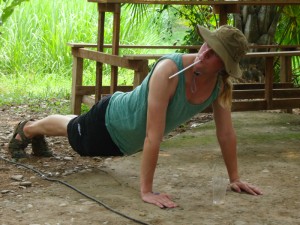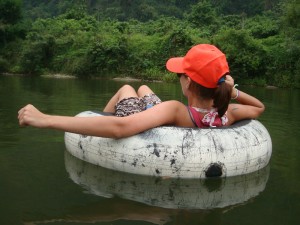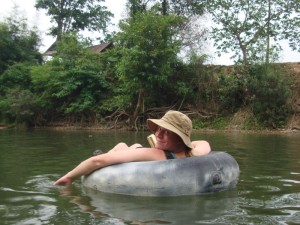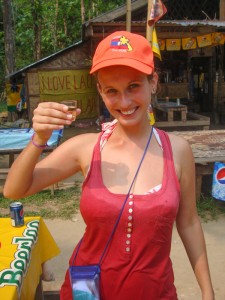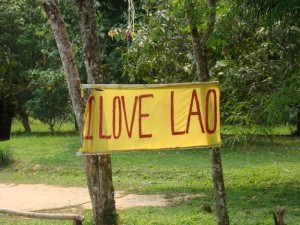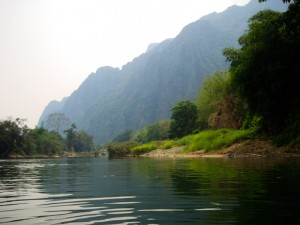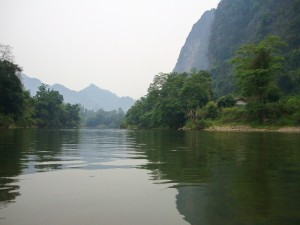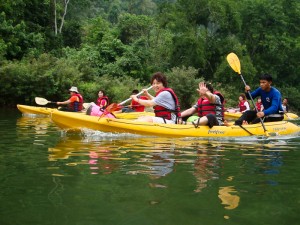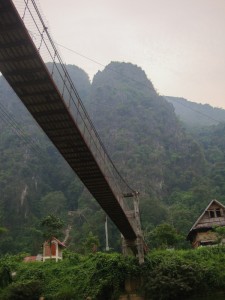Visiting the killing fields is something we wanted to do but not something we looked forward to.
The tuk-tuk ride from Phnom Penh took about 30 minutes and as we approached the edge of the city, blue skies turned to black clouds. Rain lashed down, turning the road into a river, while thunder boomed and lightning cracked overhead. We decided to brave the weather and carried on regardless. Eventually city roads turned into gravel paths and we were bouncing along through villages and past temples.
The rain had started to ease as we turned in to the car park but the thunder and lightning continued on unabated. Neither of us were sure what to expect. We walked in through the small side gate and paid for our ticket. A friendly worker gave us our audio guide and an umbrella. Placing on the headphones and being sheltered by the giant umbrella, I realised that this would be a very solitary and personal experience. Walking down the path, I saw the grey and yellow memorial stupa; both beautiful and sombre. Each of the four sides is made up of glass doors and windows. Moving closer I could see seventeen levels inside, each one layered with bones from the excavated graves. The sandy path took me away from the stupa towards a series of sign boards marking where buildings stood during the genocide. Each sign had a story and only added to the magnitude of the situation.
The entrance to the killing fields and mass grave site was marked by a boundary of trees and we followed the path through a small gap.
Despite the number of tourists walking around, this area was eerily quiet. Patches of sunken earth marked where excavations had taken place, reminding me of the battlefields of the first world war. Much of the field still held grave sites and were marked with wooden huts to protect them. On the wooden posts marking the grave boundaries, visitors had left coloured cotton bracelets as a sign of respect and memorial. Other sites had concrete boundaries. Narrow paths worn in the grass wound their way past the graves. At each excavation site, black and white photographs showed the evidence of the work that had taken place. In several places there were chains cordoning off certain areas. This was where scraps of bone, teeth and clothing were rising to the surface. The memorial caretakers carefully monitored the fields for such occurrences and then collected them to be kept safe in the large glass cases. In one such case, we saw evidence of bindings used to secure the victims and material used as blindfolds. Every piece of evidence was collected so those victims could be remembered and the atrocities never forgotten.
One of the mass graves held victims of the Khmer rouge- defectors who were decapitated.
Towards the back of the field was a man-made lake. It also held four submerged mass graves that the authorities had left. There were seats overlooking the water and we took a few minutes to sit down and reflect upon what we had learnt and seen so far. Under any other circumstances, this would have been a peaceful lake-side spot.
The tour took us full circle to the stupa and this time we spent a little longer appreciating it as a memorial. The doors were locked so we walked around the stupa several times trying to comprehend what we were seeing. Each layer of the towering glass case held bones, weapons or fragments of clothing. Each skull had been subject to forensic testing and coloured dots marked out an array of information: whether the skull was male, female, their age range and the type of fatal wound received. I was taken aback by the depth of analysis and it took four circles of the stupa before I stopped reading the signs and started to notice the skulls and bones for what they were.
It’s not difficult to understand why the Cambodians have documented this genocide in such detail. The dead are to be remembered and the living should never have to experience such an act again.
With a greater understanding of the genocide and heavier hearts, we walked in silence back to our waiting tuk-tuk driver.
